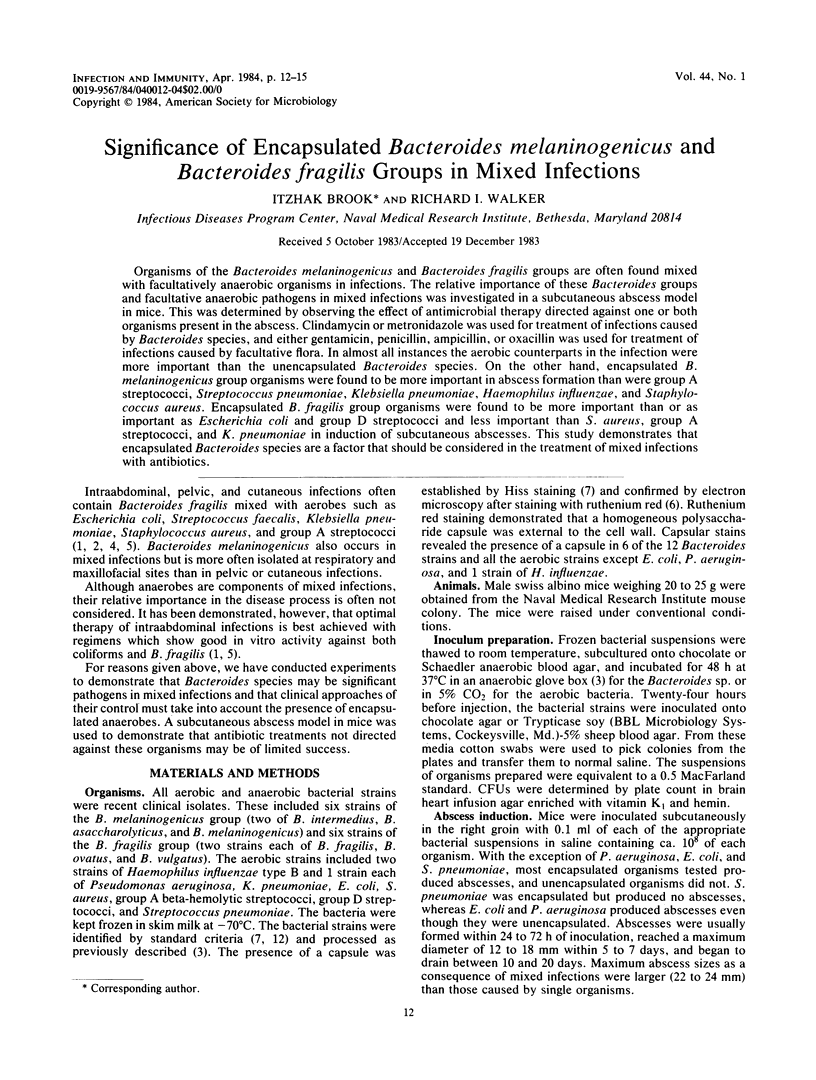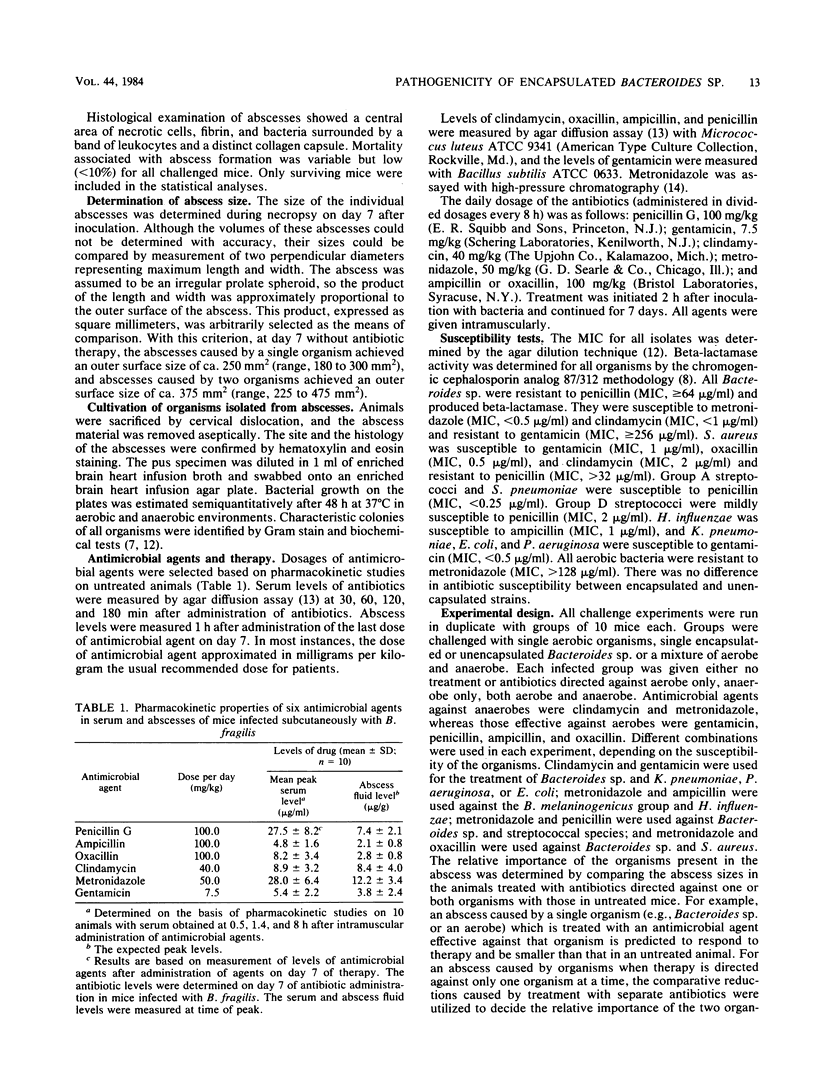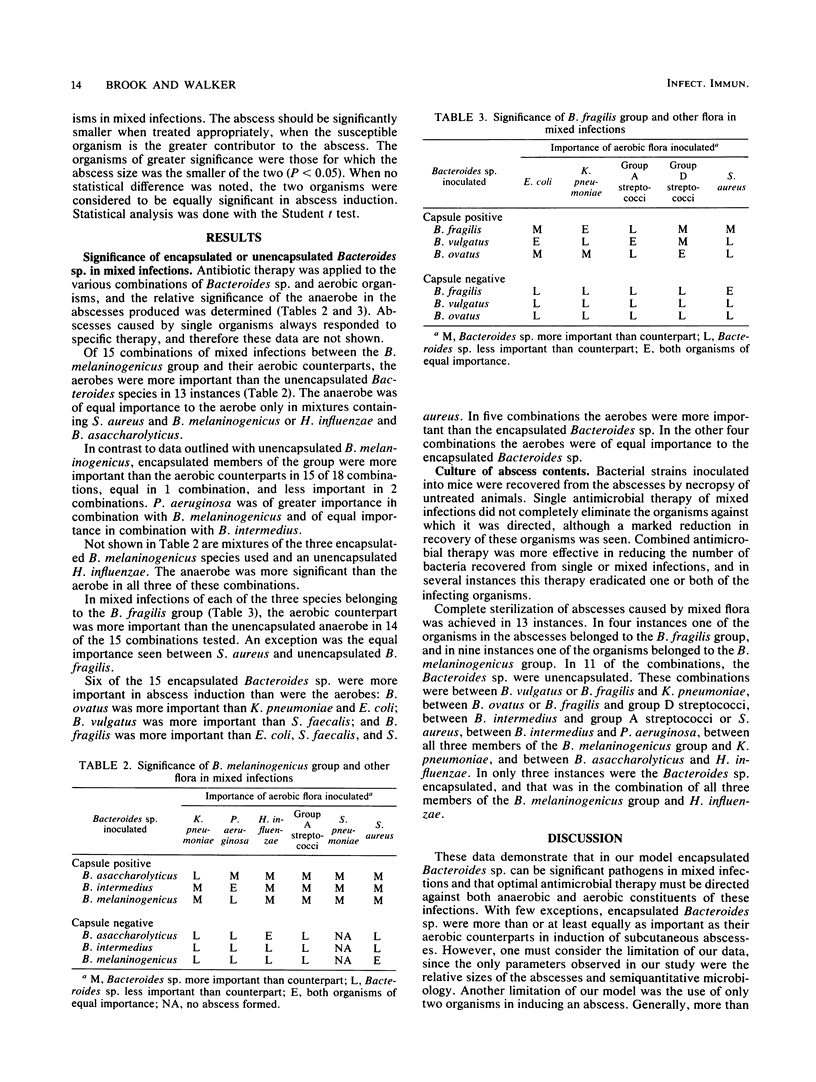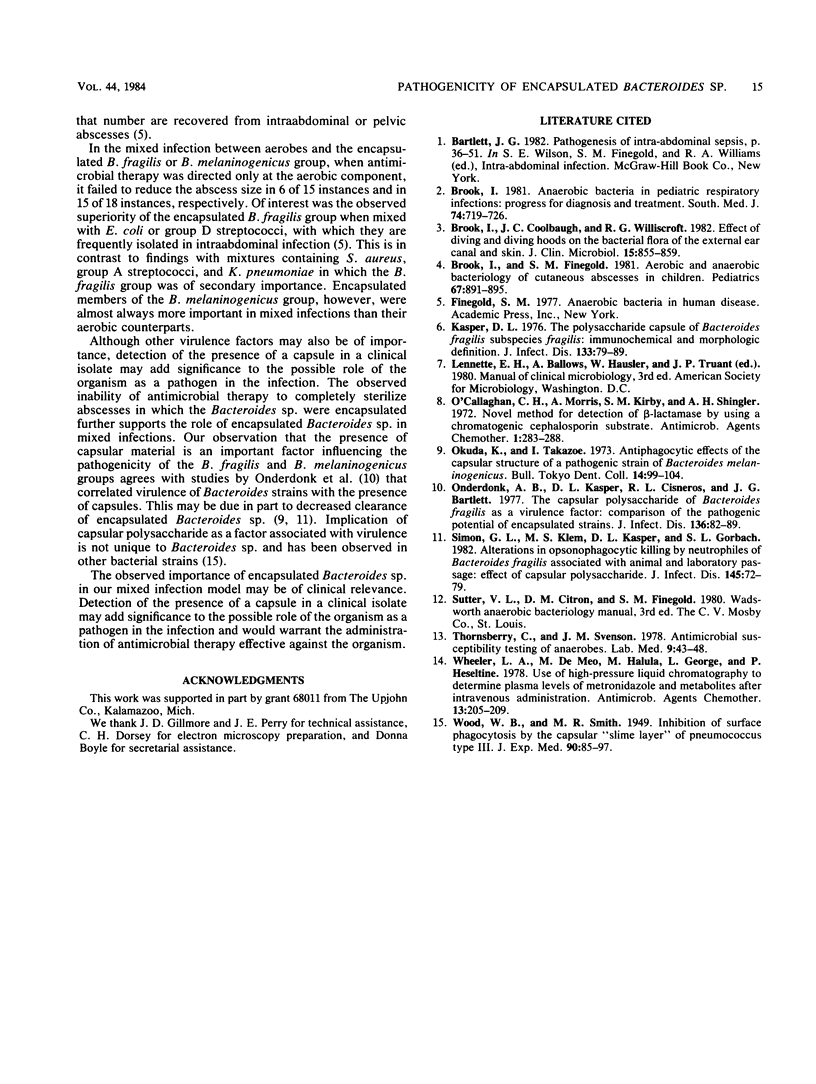Abstract
Organisms of the Bacteroides melaninogenicus and Bacteroides fragilis groups are often found mixed with facultatively anaerobic organisms in infections. The relative importance of these Bacteroides groups and facultative anaerobic pathogens in mixed infections was investigated in a subcutaneous abscess model in mice. This was determined by observing the effect of antimicrobial therapy directed against one or both organisms present in the abscess. Clindamycin or metronidazole was used for treatment of infections caused by Bacteroides species, and either gentamicin, penicillin, ampicillin, or oxacillin was used for treatment of infections caused by facultative flora. In almost all instances the aerobic counterparts in the infection were more important than the unencapsulated Bacteroides species. On the other hand, encapsulated B. melaninogenicus group organisms were found to be more important in abscess formation than were group A streptococci, Streptococcus pneumoniae, Klebsiella pneumoniae, Haemophilus influenzae, and Staphylococcus aureus. Encapsulated B. fragilis group organisms were found to be more important than or as important as Escherichia coli and group D streptococci and less important than S. aureus, group A streptococci, and K. pneumoniae in induction of subcutaneous abscesses. This study demonstrates that encapsulated Bacteroides species are a factor that should be considered in the treatment of mixed infections with antibiotics.
Full text
PDF



Selected References
These references are in PubMed. This may not be the complete list of references from this article.
- Brook I. Anaerobic bacteria in pediatric respiratory infection: progress in diagnosis and treatment. South Med J. 1981 Jun;74(6):719–726. doi: 10.1097/00007611-198106000-00023. [DOI] [PubMed] [Google Scholar]
- Brook I., Coolbaugh J. C., Williscroft R. G. Effect of diving and diving hoods on the bacterial flora of the external ear canal and skin. J Clin Microbiol. 1982 May;15(5):855–859. doi: 10.1128/jcm.15.5.855-859.1982. [DOI] [PMC free article] [PubMed] [Google Scholar]
- Brook I., Finegold S. M. Aerobic and anaerobic bacteriology of cutaneous abscesses in children. Pediatrics. 1981 Jun;67(6):891–895. [PubMed] [Google Scholar]
- Kasper D. L. The polysaccharide capsule of Bacteroides fragilis subspecies fragilis: immunochemical and morphologic definition. J Infect Dis. 1976 Jan;133(1):79–87. doi: 10.1093/infdis/133.1.79. [DOI] [PubMed] [Google Scholar]
- O'Callaghan C. H., Morris A., Kirby S. M., Shingler A. H. Novel method for detection of beta-lactamases by using a chromogenic cephalosporin substrate. Antimicrob Agents Chemother. 1972 Apr;1(4):283–288. doi: 10.1128/aac.1.4.283. [DOI] [PMC free article] [PubMed] [Google Scholar]
- Okuda K., Takazoe I. Antiphagocytic effects of the capsular structure of a pathogenic strain of Bacteroides melaninogenicus. Bull Tokyo Dent Coll. 1973 Aug;14(3):99–104. [PubMed] [Google Scholar]
- Onderdonk A. B., Kasper D. L., Cisneros R. L., Bartlett J. G. The capsular polysaccharide of Bacteroides fragilis as a virulence factor: comparison of the pathogenic potential of encapsulated and unencapsulated strains. J Infect Dis. 1977 Jul;136(1):82–89. doi: 10.1093/infdis/136.1.82. [DOI] [PubMed] [Google Scholar]
- Simon G. L., Klempner M. S., Kasper D. L., Gorbach S. L. Alterations in opsonophagocytic killing by neutrophils of Bacteroides fragilis associated with animal and laboratory passage: effect of capsular polysaccharide. J Infect Dis. 1982 Jan;145(1):72–77. doi: 10.1093/infdis/145.1.72. [DOI] [PubMed] [Google Scholar]
- Wheeler L. A., De Meo M., Halula M., George L., Heseltine P. Use of high-pressure liquid chromatography to determine plasma levels of metronidazole and metabolites after intravenous administration. Antimicrob Agents Chemother. 1978 Feb;13(2):205–209. doi: 10.1128/aac.13.2.205. [DOI] [PMC free article] [PubMed] [Google Scholar]


